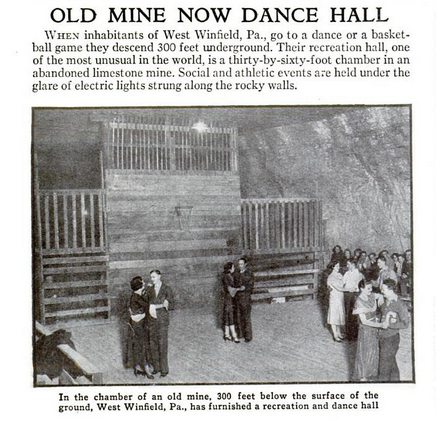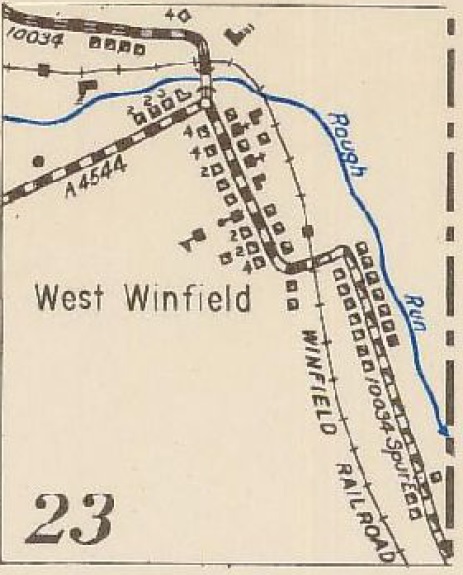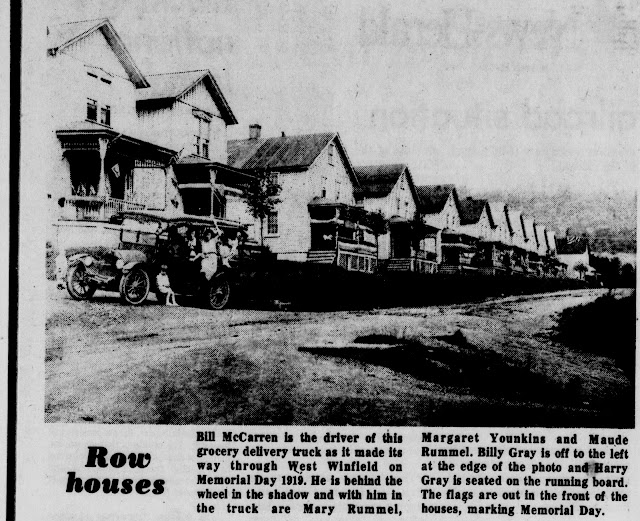Season has officially begun! Today Lou and I headed up to Butler County to get a closer look at Winfield Furnace and the former town site of West Winfield. Winfield Furnace isn't as old as some of the iron furnaces we have visited. The furnace wasn't built until 1847 and was constructed by William Speer. Speer operated the furnace until it was sold to the Winfield Coal Company in 1856. After that, the furnace was purchased by William Stewart and the furnace went out of blast in 1864. Initially the furnace was powered by water but was later switched over to steam. This was a charcoal fueled furnace and produced around 40 tons of iron per week. This furnace is starting to show its age. The large stones are starting to crack and crumble from the inside, and a collapse of the northern side is inevitable unless some preservation work gets underway soon. This furnace is approaching its 172nd birthday. We were able to locate a possible water race and found some slag near the creek. The terrain has been very altered over the years. By the time this oven went out of blast, it witnessed a town grow up around it and then watched the town disappear. It saw a railroad get built next to it and it watched it fall into abandonment.
The former town of West Winfield, which today only a few traces remain, was a company town constructed to house the workers of the limestone mines in this area. The mining of limestone was the largest industry in this area. There is still a very active limestone mine in operation. F.W. McKee owned the largest limestone mine of it's kind in the world and constructed the town. West Winfield was originally called Winfield Furnace and a post office was established in 1885. It was, however, known as Winfield Furnace in the 1874 Butler County Atlas.
 |
This photo is from the May 1932 Popular Science magazine. West Winfield was certainly a unique place. |
West Winfield as a town appears to have no longer existed by the 1980's. I have been unable to find an exact year when the last house was torn down.
 |
A 1938 aerial view of West Winfield. |
 |
Inset from the 1941 Butler County map showing West Winfield. The railroad is listed as the Winfield Railroad but this was originally a spur of the Buffalo, Rochester, and Pittsburgh Railroad. |
 |
A circa 1919 photo of West Winfield taken from the Franklin News Herald- March 5, 1975 |
 |
A map of West Winfield taken from the Pennsylvania Mine Map database, Penn State University. |
 |
A crate from Butler County Mushroom Farms which is listed for sale (at an unreasonable price) on Amazon. |
 |
West Winfield from the 1902 quad Kittanning topographic map. |
Enormous pipe. |
This was enormous. |
Lou found these two images while searching online. We believe the two large steel objects are part of a cone crusher which was used in the production of concrete.
Approaching Winfield Furnace. |
From inside the stack. |
Intact wall of the stack. |
Side where this furnace is starting to fall apart. |
The outside is still very intact. |
Old Buffalo, Rochester and Pittsburgh Railroad bridge crossing Rough Run over to an old limestone mine. |
A tree that met the wrath of a beaver. |
Part of the railroad grade behind the former town. |
Old hopper along the railroad grade. |
Some old foundations next to the hopper. |
Remains of an old switch on the railroad. |
A couple buried railroad ties. |
Front of the hopper. |
One of the denizens of the forest. |
Side of the hopper, looking down at the old town site. |
Looking down the road. The lower section of West Winfield was located in the field on the right. |
One of the last remaining structures just outside of the former town. |
Lou pointed out that there was a new "smart" meter installed on this building. They really are forcing these things on everybody. |
Another remaining structure. |
An abutment along the creek. On the other side is a portal into an old limestone mine. Rough Run was running extremely rough today and there was no way to get to the other side. |
The portal can be seen roughly through the trees. |
Old bricks lining the creek. |
The upper portion of the former town site. West Winfield was located on the field to the left. |
Armstrong Cement Plant. |
One of the conveyors leading up to the limestone mines. |


